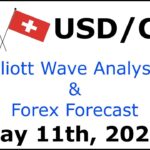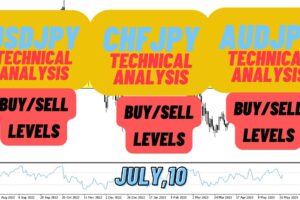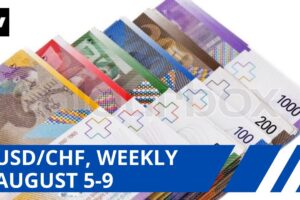EUR/USD, GBP/USD, and USD/CAD are major currency pairs traded in the forex market.
EUR/USD represents the exchange rate between the euro and the US dollar. The euro is the official currency of 19 European Union countries,
The USD/CHF currency pair represents the exchange rate between the US dollar and the Swiss franc. The value of this pair fluctuates based on a variety of economic and geopolitical factors affecting both countries.
Historically, the Swiss franc has been considered a safe haven currency due to its stability and low inflation. This has led to a situation where investors tend to buy Swiss francs during times of global uncertainty, leading to an increase in its value against other currencies, including the US dollar. However, the Swiss National Bank has intervened in the foreign exchange market to prevent the franc from appreciating too much, which can harm Swiss exports.
On the other hand, the US dollar is the world’s dominant reserve currency and is used in international transactions, including the trading of oil and other commodities. This makes the value of the USD/CHF pair important to traders worldwide. Economic indicators like interest rates, inflation rates, and gross domestic product (GDP) can impact the value of the US dollar, as well as the Swiss franc.
In recent years, the value of the USD/CHF pair has been influenced by several factors. One of the most significant is the monetary policy of the US Federal Reserve, which has been cutting interest rates to stimulate the economy. In contrast, the Swiss National Bank has kept interest rates low to prevent the Swiss franc from becoming too strong.
USD/CAD represents the exchange rate between the US dollar and the Canadian dollar. The US dollar is the currency of the United States, while the Canadian dollar is the currency of Canada. USD/CAD is a commodity currency pair, with Canada being a major exporter of crude oil and other commodities. The exchange rate between USD and CAD is influenced by various economic factors such as oil prices, economic data releases, and interest rate differentials.
#USDCHF technical chart analysis for upcoming week #usd #chf #usdchf
#USDCHF technical chart analysis for upcoming week #usd #chf #usdchf
Trading is an activity that involves buying and selling financial instruments such as stocks, currencies, and commodities with the aim of making a profit. However, like any other business, trading involves risks that traders must be aware of. The market is unpredictable, and no trading strategy is foolproof. Every trade carries the risk of loss, and traders must be prepared to accept that risk.
Risk in trading comes in many forms. It could be a sudden and unexpected market movement, a technical issue that disrupts trading operations, or an error in judgment by the trader. The key to managing risk in trading is to have a well-thought-out trading plan that incorporates risk management strategies. This includes setting stop-loss orders, diversifying investments, and using appropriate position sizing.
Traders should also be prepared to continuously educate themselves and stay updated on the latest market developments. This will enable them to make informed decisions and adjust their trading strategies accordingly.
In conclusion, trading is a high-risk activity that requires careful consideration and planning. While the potential for profit can be alluring, traders must always keep in mind the risk involved and take steps to manage it effectively.
Forex trading involves a significant amount of risk and is not suitable for everyone. While it can be an excellent opportunity for profit, there is always a chance of losing money. As a trader, it is essential to understand that you are solely responsible for your trading decisions and their outcomes. It is crucial to do your research, practice with demo accounts, and develop a sound trading strategy before investing real money in the market. Remember that the market is constantly changing, and it is impossible to predict future price movements with complete accuracy. Therefore, it is important to manage your risk appropriately and never risk more than you can afford to lose





 LIVE: Analisa Forex Hari I…
LIVE: Analisa Forex Hari I… 




